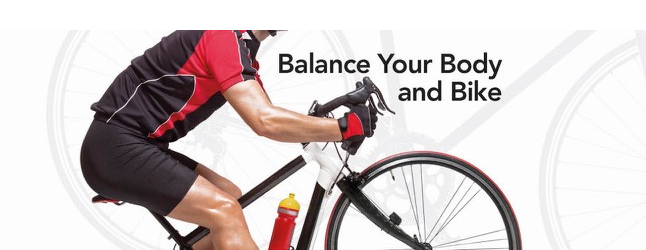
Balance your body and bike
6th September 2020
Georgie Mai
Clinic Director & Lead Sports Therapist
If you’ve suffered an injury cycling around Bedfordshire and need some help, arrange a Physiotherapy or Sports Therapy appointment, or Online Quick Slot, with our Biggleswade injury clinic by visiting our booking page.
People have been riding bikes since the 1800s, however in recent years the number of people cycling has surged. No longer is it an elite competitive sport, or ‘just’ a means of getting you from A to B, cycling is now a worldwide, mass-participation activity. Cycling is now available to most people regardless of age, size or ability. In fact it’s the preferred form of exercise for tens of thousands of people, and lots of us ride because we like to do our bit for the planet!
It is an extremely effective form of low weight-bearing cardio (aerobic) exercise. While weight-bearing activity like running is important to maintain good bone health, it’s a very good idea to mix it up with some non-weight-bearing activities like cycling and swimming.
Cycling injuries
Fitness can also be fickle. One minute you’re in the form of your life, and the next you find yourself struggling to rotate the pedals without pain. Cycling injuries are an unfortunate downside to the activity, and some people are more prone to suffering them than others.
There are two main types of cycling injuries – those caused by falling off (acute injury), often resulting in fractures, contusions, abrasions, and concussion. Then there are the more common ‘overuse injuries’ caused by the repetitive nature of cycling including overtraining, biomechanical stresses, often due to muscle imbalances, and incorrect bike set-up.
This is why being posturally assessed and having your bike setup checked are particularly important if you plan on cycling regularly. And just because you have it done one year, doesn’t mean you’re sorted for ever! Everyday activities affect our muscles balances and this can change over time, and it is very frequently these muscle imbalances that cause injury.
Help with cycling injuries
We’ve put together leaflets on 8 of the most common cycling injuries. Each leaflet is packed full of practical advice on things you can do both in terms of your body conditioning as well as your bike set up, to both prevent injuries happening in the first place, as well as rehabilitate existing ones.
The following injuries, specific to cycling, are covered:
- Burning feet (metatarsalgia)
- Achilles tendon pain
- Knee pain
- Iliotibial band pain
- Hip pain
- Back pain
- Hand pain
- Neck pain
The science bit
As with any overuse, overload, or training error injury, you have to consider your body’s tissue capacity. Musculoskeletal tissues including muscle, tendon and bone are constantly evolving and with appropriate loading (training) and adequate recovery time, the tissue gets stronger and develops better stamina.
However, over-loading or under-loading results can cause a breakdown in tissues, tissue fatigue, and pain. Hence, cumulative stress or load that’s above the capacity of the tissues, can cause overuse injury. This makes monitoring your training load, giving your body time to adapt, and increasing the volume and intensity of your training gradually is an essential component of staying injury free when cycling.
And this is relevant whether you’re a casual recreational cyclist who takes their bike for a spin once a week, or a more serious cyclist who take part in long group training rides.
A Ferrari built on a Ford chassis? Unthinkable! But could that be you? Imagine the speed and power of a Ferrari without a matching chassis to ensure stability and control required for good handling and sticking to the road. The inner workings providing the stability, control, and endurance that comes from your core and surrounding pelvic/buttock muscles is essential as a base for good injury-free cycling.
Three A-B-C components to staying injury free on your bike
A – Alignment. Muscle imbalances, weakness, flexibility issues, leg length discrepancies and being flat-footed.
B – Bike setup. This is fundamental to get right – incorrect bike set up can be the cause of injuries that could sideline you for months and yet it’s easy to get right with some good advice.
C – Conditioning and fitness. A good stretching and strengthening programme to correct muscle imbalances and ensure you’re strong where you need to be, is the final component in staying injury free.
Like any repetitive motion sport, cycling can produce a catalogue of niggling aches and pains, which if left untreated can become more serious. You can learn more about the specifics of the most common cycling injuries and how you can manage and prevent them using our leaflets – featuring evidence-based information and best practice protocols.
Of course, our resources are generic in nature and any persistent issue should be investigated by an appropriately qualified and experienced professional. Should you have any concerns or questions, please feel free to reach out. We’re here to help!
Georgie Mai.







